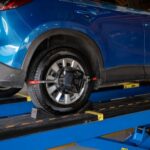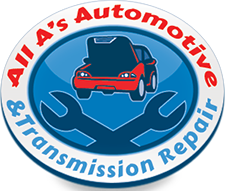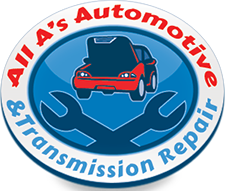What The Heck Is A Wheel Alignment? Why My Car Needs One?

 Owning a car comes with a lot of responsibility. There are car payments, insurance, trips to the gas station & car wash, and routine maintenance. The expenses can add up very quickly. It’s a lot like owning pets but without the cuddles on the sofa. When it comes to understanding wheel alignment, it’s important to consider that misaligned wheels contribute to tire tread wear and vehicle pulling, which reduces vehicle safety.
Owning a car comes with a lot of responsibility. There are car payments, insurance, trips to the gas station & car wash, and routine maintenance. The expenses can add up very quickly. It’s a lot like owning pets but without the cuddles on the sofa. When it comes to understanding wheel alignment, it’s important to consider that misaligned wheels contribute to tire tread wear and vehicle pulling, which reduces vehicle safety.
What Is Wheel Alignment?
Wheel alignment is a necessary, factory-recommended service that adjusts your car’s wheels to point straight ahead, reducing vehicle pulling. Wheel alignment (sometimes called tire alignment) is how the wheels and tires align with each other in relation to the road.
How Is Wheel Alignment Done?
Wheel alignment is all about ‘car math.’ This maintenance service adjusts wheel angles and pitches to meet factory specs to provide optimal handling and prolong tire life. Depending on your vehicle year, make, and model, a 4-wheel alignment will get all the tires working together and pointing in the correct directions. Uniformity is essential when it comes to wheel alignment. The following three angles require adjustment during a wheel alignment service.
Camber Angle
Camber refers to the inward (towards the engine) or outward (away from the engine) tilt of the vehicle’s tires when viewed from the front. When viewed head-on, camber is the mathematical angle between your tires and the road.
- Positive camber means the top of the tires tilt away from the center of the vehicle.
- Negative camber means the top of the tires are tilting towards the center of the vehicle.
- Zero camber means the top of the tires have no tilt and are perfectly perpendicular to the road.
Caster Angle
Caster refers to the front or rear tilt of the steering axis when viewed from the side along a hypothetical vertical line.
- Positive caster ensures the vehicle moves straight with little to no steering wheel correction.
- Negative caster improves steering at the expense of handling and stability when driving in a straight line.
Toe Angle
Toe refers to the direction your vehicle’s tires point when viewed from above.
- Toe-in means the wheels point inward
- Toe-out means the wheels point away from each other
Signs You Need A Wheel Alignment
Recognizing the signs of misaligned wheels is important so you can remedy the situation quickly. If left unaddressed, driving with your vehicle’s wheels out of alignment can be dangerous and costly. Proper vehicle function requires all four wheels to respond accurately to steering wheel adjustments. Your vehicle’s wheels should point straight ahead, along with the steering wheel. You need a wheel alignment service if the wheels point off-center when the steering wheel aims straight forward.
Shaking or Vibrations
The steering wheel should not vibrate or shake while driving. If it does, chances are good that your car has misaligned wheels or issues with the tires, suspension, or steering systems.
Steering Issues
Misaligned wheels often create very noticeable steering issues. It’s important to note changes while driving. Bring your vehicle to your trusted local auto service center if it exhibits any of the following steering issues.
- The steering wheel is off-center or does not return to the center position
- Tires don’t grip the road appropriately while cornering
- Squealing sound when accelerating or turning
- Poor handling or it feels unstable during turns
- The vehicle feels twitchy when driving straight
Suspension Wear
Wheel misalignment can add extra strain to your vehicle’s suspension components. Over time, this can cause excessive wear and damage to the control arm, struts, and shocks.
Tire Tread Wear
With proper tire maintenance, the tread should wear evenly. Uneven tire tread wear usually means misaligned wheels or even an air pressure issue.
- Reduced traction due to uneven tread wear
- Incorrect tire pressure – too much or too little air in your tires creates uneven wear patterns
- Excessive wear on the inside or outside tread on your tires
- Replacing your tires more often
Vehicle Pulling
When your alignment is off, your vehicle can pull off-center, affecting steering and vehicle performance. Vehicle pulling means your car may veer to one side. For example, if you’re driving in a straight line but must continuously adjust the steering wheel, that’s vehicle pulling. This phenomenon wreaks havoc on your tire tread, suspension parts, and steering reliability. Schedule a wheel alignment service to address this issue quickly.
What Causes Misaligned Wheels?
Misaligned wheels occur over time through simply driving your car. However, some instances and situations can contribute to it. Let’s look at some of them:
- Rough road surfaces
- Routinely bumping curbs or parking blocks
- Potholes
- Minor traffic accidents or collisions
- Getting new tires
- Worn suspension components
How Often Do I Need Wheel Alignment Service?
Remember, wheel alignment is a routine maintenance service that does not last for the life of your car. Always follow the manufacturer-recommended service interval for wheel alignment. Your owner’s manual should contain a service schedule for your specific vehicle. As a rule, never go over two years between a wheel alignment service, even when you experience none of the above signs. If you are dealing with any of the above issues, schedule a diagnostic service to determine the cause – even if your vehicle is not yet due for routine wheel alignment maintenance.
Wheel Alignment Service in Midland, MI
All A’s Automotive & Transmission Repair is a family-owned and operated business in Midland, MI. We have years of experience and the resources necessary to treat your vehicle with careful, trustworthy attention. Our service technicians will gladly discuss if misaligned wheels are causing tire tread wear and vehicle pulling in your car.
Schedule Service
If you want honest and reliable wheel alignment, call us at (989) 631-4672 or visit our website to book your next appointment.
Posted in: Wheel Alignment
Leave a Comment (0) ↓
